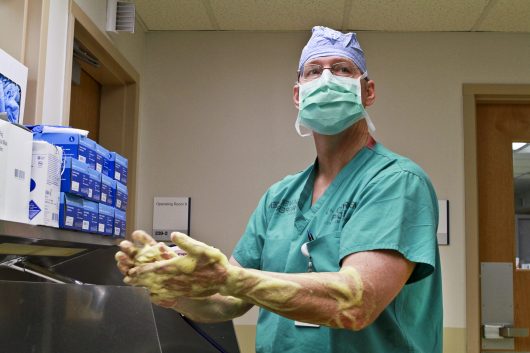Two Advancements in the Treatment of MDR-TB
 The World Health Organization (WHO) recently recommended two changes in the treatment of MDR-TB (multidrug-resistant tuberculosis): a new rapid diagnostic test and a shorter, cheaper treatment regimen.
The World Health Organization (WHO) recently recommended two changes in the treatment of MDR-TB (multidrug-resistant tuberculosis): a new rapid diagnostic test and a shorter, cheaper treatment regimen.
The rapid diagnostic test is a DNA-based test that identifies genetic mutations in MDR-TB strains that make them resistant to second-line drugs. Second-line drugs are the most important drugs used in the treatment of MDR-TB, fluoroquinolones and injectables. If patients resistant to second-line drugs are treated with either the current or the new recommended regimen, then their MDR-TB risks evolving into extensively drug-resistant tuberculosis.
Unlike the previous diagnostic test, which took three or more months to produce results, this new test will deliver results in 24 to 48 hours.
Because the rapid diagnostic test detects how resistant a patient’s tuberculosis is to treatment, it can determine a patient’s eligibility for the new regimen that WHO recommends. Ideally, patients with uncomplicated MDR-TB (patients not diagnosed with a strain of tuberculosis that is resistant to second-line drugs) will be the ones using the new regimen.
The new treatment regimen, which was developed by the International Union Against Tuberculosis and Lung Disease (The Union), takes only half the time and is almost half the cost of the current regimen according to Dr. Mario Raviglione, the director of WHO’s Global TB Program.
Currently, the treatment of MDR-TB takes between 18 to 24 months to complete. Dr. ID Rusen, a senior vice president of The Union, told The Guardian that this equates to 14,000 pills over two years for only one person, all for a regimen that, according to WHO, has a cure rate of less than 50 percent.
WHO stated that the low success rate is due to the side effects patients undergo after taking second-line drugs for an extended period of time. In a Huffington Post article, Dr. Ariel Pablos-Mendez of USAID and Raviglione wrote that the side effects include debilitating nausea, vomiting and heaving, as well as vision loss and depression paired with suicidal thoughts. These difficulties, coupled with the financial difficulties many people experience as they try to pay for the current regimen, often cause people to interrupt their treatment.
The new treatment regimen that WHO recommends takes only nine to 12 months, and it costs less than $1,000. The shorter time frame and lower cost are expected to help people finish treatment, and the rapid diagnostic test will help them receive treatment more quickly. Less time and money spent on treatment for one person also frees up resources, so even more people will be able to receive the necessary care.
Though the new regimen has not gone through formal clinical trials, WHO has confidence the regimen works. It was tried successfully in 515 patients in Bangladesh between 2005 and 2011, then on 408 people in various African nations. Raviglione told The Guardian that WHO was accelerating the procedure because they feel the new regimen has “real potential to save lives immediately.”
– Anastazia Vanisko
Photo: Flickr
